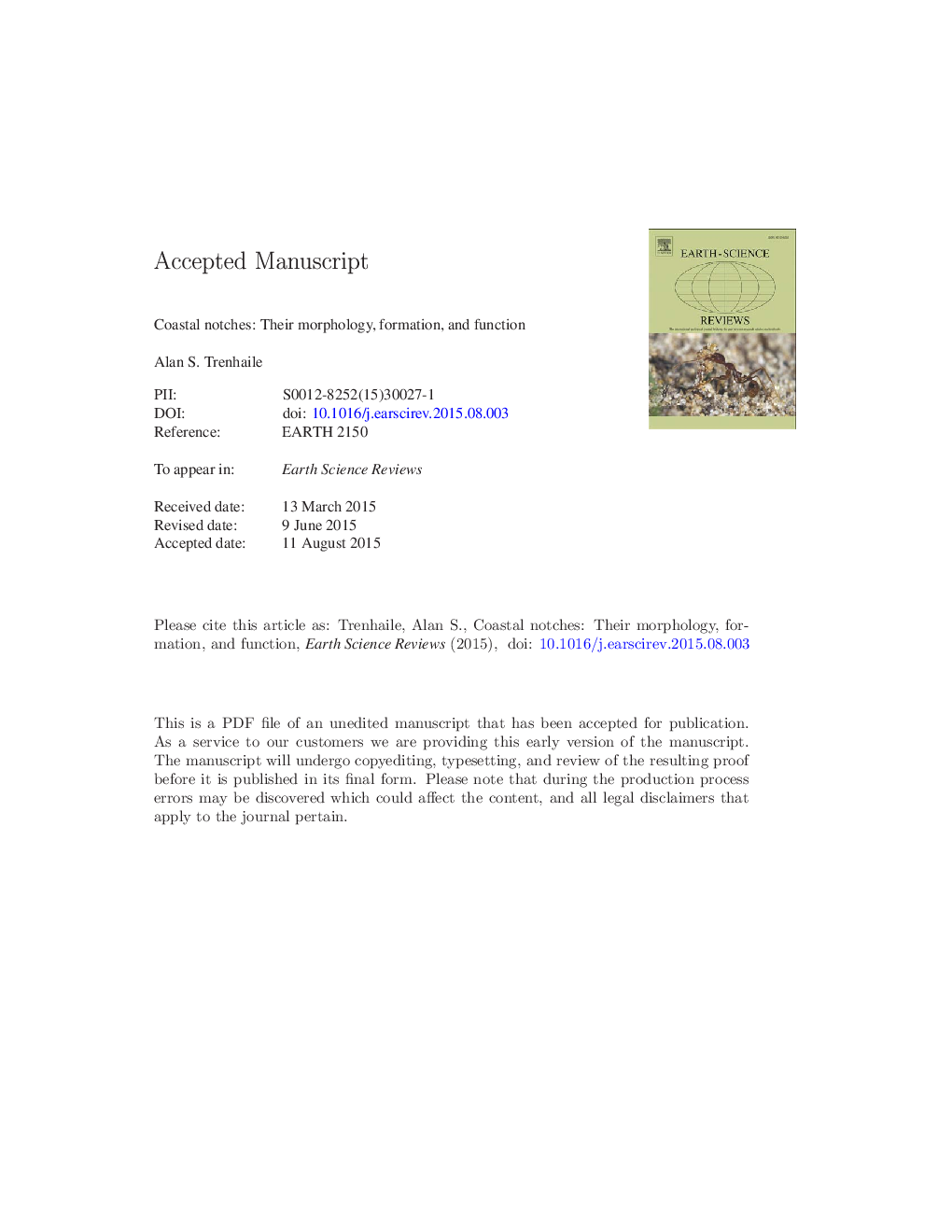| کد مقاله | کد نشریه | سال انتشار | مقاله انگلیسی | نسخه تمام متن |
|---|---|---|---|---|
| 6442909 | 1639952 | 2015 | 85 صفحه PDF | دانلود رایگان |
عنوان انگلیسی مقاله ISI
Coastal notches: Their morphology, formation, and function
ترجمه فارسی عنوان
پیک های ساحلی: مورفولوژی، شکل گیری و عملکرد آنها
دانلود مقاله + سفارش ترجمه
دانلود مقاله ISI انگلیسی
رایگان برای ایرانیان
کلمات کلیدی
برش ها، تغییر در سطح دریا، فرسایش موج، آب و هوا، بیو هیدروژن،
موضوعات مرتبط
مهندسی و علوم پایه
علوم زمین و سیارات
زمین شناسی
چکیده انگلیسی
Deep coastal notches develop through undercutting of steep coastal slopes consisting of rocks that are strong enough to support the weight of the overburden. Notches are found from the Tropics to the Poles and in a wide range of rock types, virtually tideless to megatidal seas, and high to low wave energy environments. The emphasis in the literature has been on notches in calcareous rocks in warm, microtidal seas, and with the general assumption that they have been produced by bioerosion or chemical dissolution. Few scientifically rigorous attempts have been made to determine the processes responsible for notch formation in different environments and rock types, however, or to determine whether different processes produce distinct notch morphologies within the same tidal and wave environments. The use of notches as palaeo-sea level markers, and to determine rates of tectonic uplift, has been particularly important in the Mediterranean. Notches are more difficult to employ for this purpose in the middle latitudes, where higher waves and tides amplify the range of elevations over which the erosional mechanisms are effective, as well as increasing the exposure and effect of rocks of variable resistance to erosion. To maximize the utility of notches as sea level markers, and to better understand and model their development in a wide range of environments, we need to understand and be able to quantify the relationship between notch shape and size and the elevational efficacy of the various erosional processes.
ناشر
Database: Elsevier - ScienceDirect (ساینس دایرکت)
Journal: Earth-Science Reviews - Volume 150, November 2015, Pages 285-304
Journal: Earth-Science Reviews - Volume 150, November 2015, Pages 285-304
نویسندگان
Alan S. Trenhaile,
